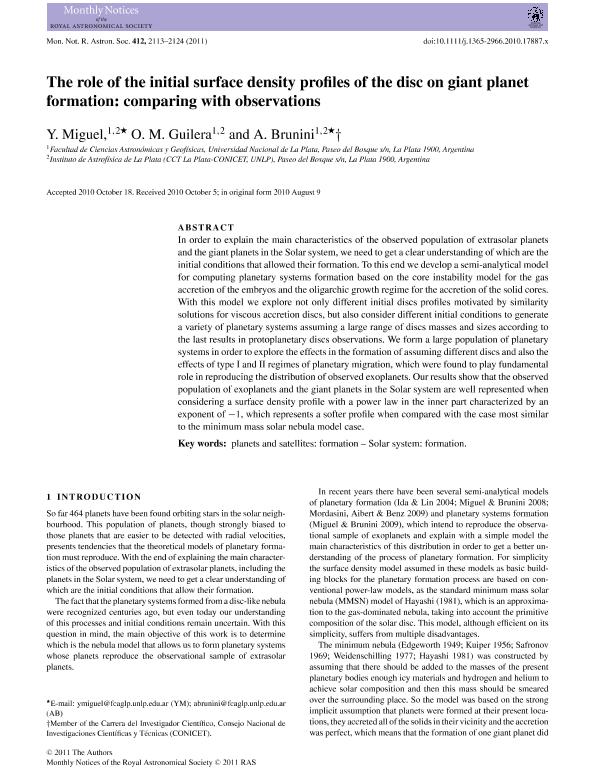Artículo
The role of the initial surface density profiles of the disc on giant planet formation: comparing with observations
Fecha de publicación:
04/2011
Editorial:
Royal Astronomical Society
Revista:
Monthly Notices Of The Royal Astronomical Society
ISSN:
0035-8711
Idioma:
Inglés
Tipo de recurso:
Artículo publicado
Clasificación temática:
Resumen
In order to explain the main characteristics of the observed population of extrasolar planets and the giant planets in the Solar system, we need to get a clear understanding of which are the initial conditions that allowed their formation. To this end we develop a semi-analytical model for computing planetary systems formation based on the core instability model for the gas accretion of the embryos and the oligarchic growth regime for the accretion of the solid cores. With this model we explore not only different initial discs profiles motivated by similarity solutions for viscous accretion discs, but also consider different initial conditions to generate a variety of planetary systems assuming a large range of discs masses and sizes according to the last results in protoplanetary discs observations. We form a large population of planetary systems in order to explore the effects in the formation of assuming different discs and also the effects of type I and II regimes of planetary migration, which were found to play fundamental role in reproducing the distribution of observed exoplanets. Our results show that the observed population of exoplanets and the giant planets in the Solar system are well represented when considering a surface density profile with a power law in the inner part characterized by an exponent of -1, which represents a softer profile when compared with the case most similar to the minimum mass solar nebula model case.
Palabras clave:
Planets Formation
,
Solar System Formation
,
Satellites Formation
Archivos asociados
Licencia
Identificadores
Colecciones
Articulos(IALP)
Articulos de INST.DE ASTROFISICA LA PLATA
Articulos de INST.DE ASTROFISICA LA PLATA
Citación
Miguel, Yamila; Guilera, Octavio Miguel; Brunini, Adrian; The role of the initial surface density profiles of the disc on giant planet formation: comparing with observations; Royal Astronomical Society; Monthly Notices Of The Royal Astronomical Society; 412; 4; 4-2011; 2113-2124
Compartir
Altmétricas




